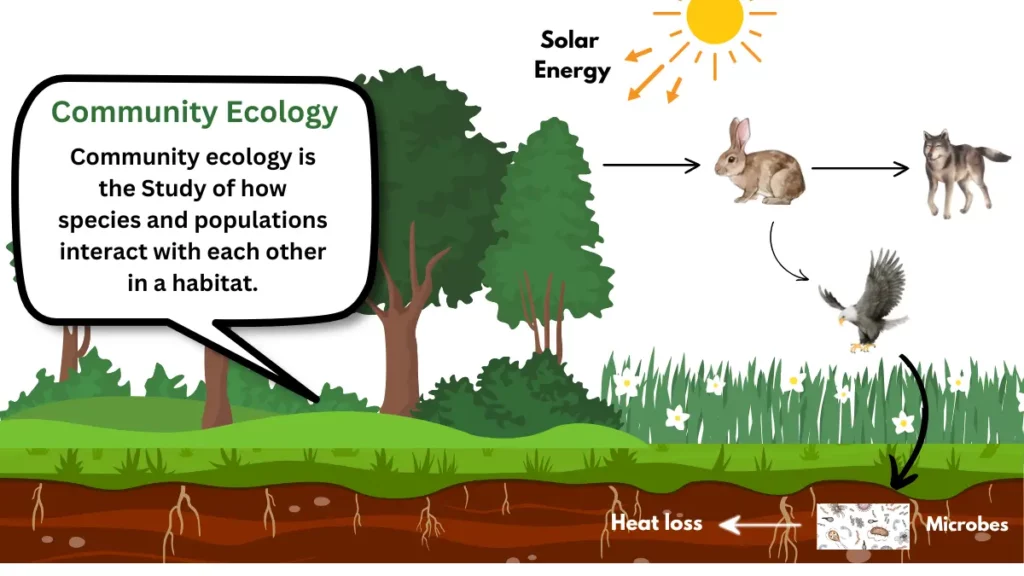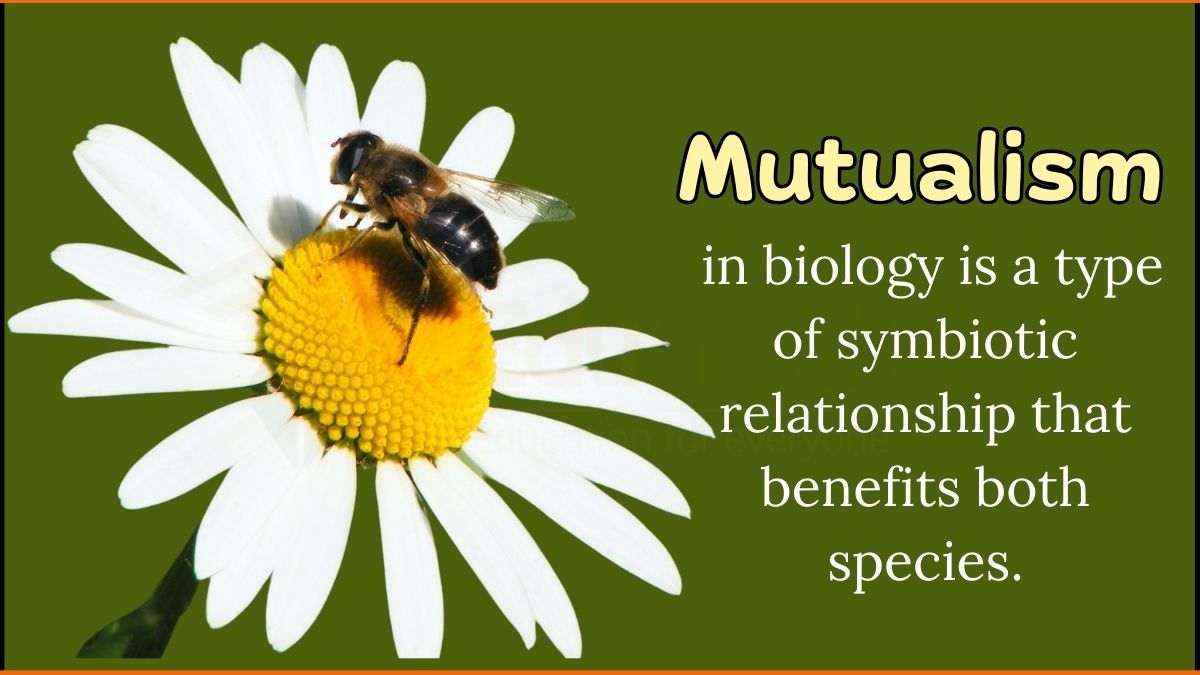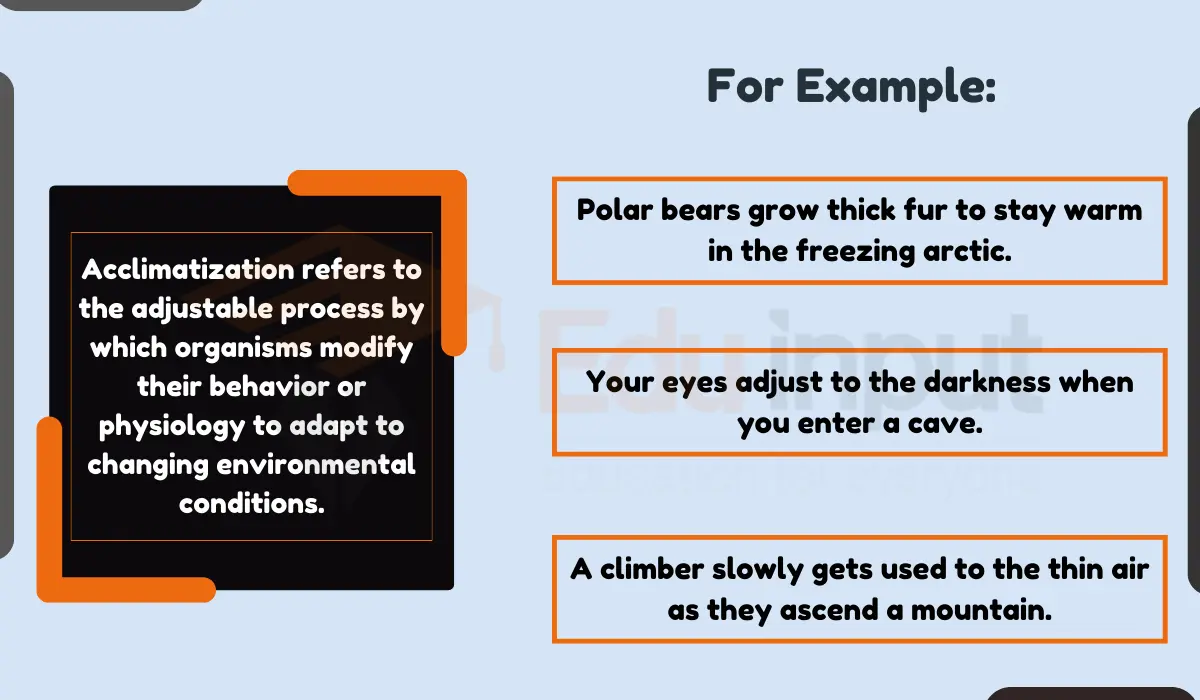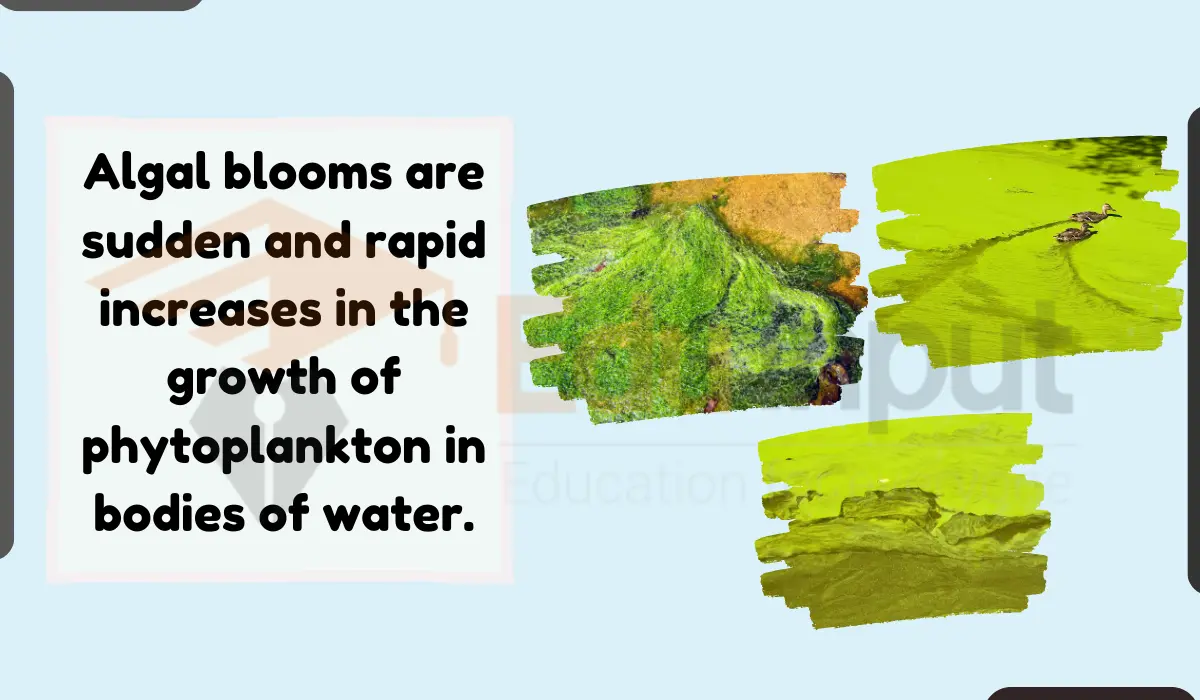Community Ecology-Characteristics, Examples and Key concepts
What is Community ecology?
Community ecology is a branch of ecology which studies the functioning of biological communities that include groups of interactive species within a particular area.

It describes how populations interact and compete with one another within a shared habitat like forest, soil, Lake Etc. These interactions form complex networks like food chains and food webs. These interactions evolve over time as species adapt to one another through coevolution. And that’s how they influence the structure & function of community.
Community structure concerns how the species are organized and interact while community function refers to the role species play. Species affect each other abundance and survival within the ecosystem.
Characteristics of Community Ecology
Here are the main characteristics of community ecology which determines how species and their interaction affect an ecosystem.
1. Species Interaction
Species interaction plays an important role in ecosystem functions, such as nutrient cycle and food webs.
In an ecological community, species interaction can be classified into two groups: intra-specific interaction (between same species) or inter-specific interaction (between two or more species). However, major types of species interaction are as follow:
- Competition- When individuals or species compete eagerly for the same resources like food or water.
- Predation– When an organism (predator) hunts another (prey) to fulfill its nutritional need, e.g., a lion hunts a zebra, or a shark preying on seals.
- Mutualism– Both species get benefit from their interlinkage. Such as bees interlink with flowers, do pollination and get nectar in return.
- Commensalism– An imbalanced relationship where one organism gets benefit while the other is neither benefited nor harmed. E.g., a suckerfish gets attach to shark for a ride.
- Parasitism– One individual gets benefited while the other is harmed. For example, a parasite tapeworm living in human digestive tract and eats your food.
2. Community Dynamics
Community dynamics focuses on the variations in community structure due to factors like disturbances. Sequence of these community changes over time is known as succession.
Primary succession is colonizing newly formed rock by living things for the first time. While Secondary succession occurs in an area previously occupied but disturbed by some disaster (like fire, flood, deforestation) and then recovered and recolonized. Community responses to these disturbances which leads to variation in community structure.
3. Biodiversity
Biodiversity plays an important role within a community. It includes:
- Species Richness- Estimating the total number of different species in a community is known as species richness. A huge number of species indicates greater biodiversity.
- Species Evenness- Estimating that how organisms of different species are evenly distributed in a community. If species have same abundance, community has a high evenness.
- Resilience- Capacity of an ecosystem to respond a disturbance (fire, windstorm, flood, deforestation) by resisting the loss or recovering it. Communities with high biodiversity are more resilient as they maintain functionality of community if species are lost or disturbed.
- Genetic Diversity– Genetic variation in inherited traits within species leads to genetic diversity. It allows the species to be more adaptable to environmental changes, helping the community for long-term survival.
- Ecosystem Diversity– Variety of habitats in a geographical location generates ecosystem diversity which is a largest scale of biodiversity. Deserts, forests, grasslands, and oceans represents the ecosystem diversity.
4. Habitat and Niche Differentiation
Habitat is an environment or area where an organism or group of species resides and interact with each other. By occupying different habitats, species can coexist more easily which leads to promote high biodiversity.
Niche is a certain or unique role that a species play to survive in an ecosystem. Species can reside in the same habitat but will not have same niches.
Habitat is the impact of environment on organism while Niche is the impact of organism on environment and that’s how they maintain a balance in community.
5. Environmental Gradients
Communities go through some climate changes due to environmental gradients over a specific geographic area. This gradient includes key factors like temperature, light, moisture, soil type or altitude. Species are distributed according to their ability to adapt these factors. For example lakes (fresh water ecosystem) have fish like trout and catfish, while oceans (salt water) have species like sharks and coral. The type of water affects which species can survive there.
6. Eco-tones
Eco-tone is a transition zone of vegetation between two communities. It contains characteristics of bordering community. Forest- grassland ecosystem is an example of eco-tone where a forest rapidly transitions into grassland.
7. Human Impact
Human activities, such as habitat destruction, pollution, and climate change, significantly influences community structures and dynamics, leading to altered interactions and loss of biodiversity.
Examples of Community Ecology
Community ecology evaluates the group of species and their interlinkages. For example, a forest ecosystem consists of communities like trees, shrubs, herbivores and decomposers (fungi, bacteria) that interlink in various ways.
Likewise, predators such as lions and cheetahs interact with herbivores (zebras, gazelles) and plants (grasses and trees), affecting the balance of species populations. Additionally, coral reefs, freshwater lakes (with fish and algae species), Deserts (with cacti and plants interaction) are also examples of community ecology.
Trophic structure
Trophic structure, a key aspect of community ecology, focuses on the arrangement of organisms based on their role in food chain from bottom to top level. It makes a trophic level pyramid where organisms are classified on the basis of their feeding relationship.
The base of this trophic level is plants which gain energy from sun and store it in chemical form. Herbivores feed on plants and gain that energy. That’s how the energy flow occurs in whole ecosystem from producers to consumers and decomposers.
Trophic structure plays an important role in community ecology as it ensures the stability of ecosystem through balanced nutrient cycle and energy flow. A variety of food chains interact to make complex ecosystem that is more adaptable to disturbances and leads to a greater biodiversity. It controls the population in a community through predator-prey relationship and creates a balanced ecosystem.

Food Chain and Food Web
Food chains show a linear pathway of energy flow from producers to consumers. It determines how the energy transfers from one organism to another in the form of food. In a predator food chain, gazers (herbivores) eat grass and carnivores eat herbivores. Likewise, in a parasite food chain, small sized organisms feed on hosts.
Food web refers to overlapping and interaction of food chains where organisms feed on various trophic levels. Food web plays an essential role in understanding the energy flow and organism’s relationship in ecosystem that is helpful to analyze a community structure.







Leave a Reply